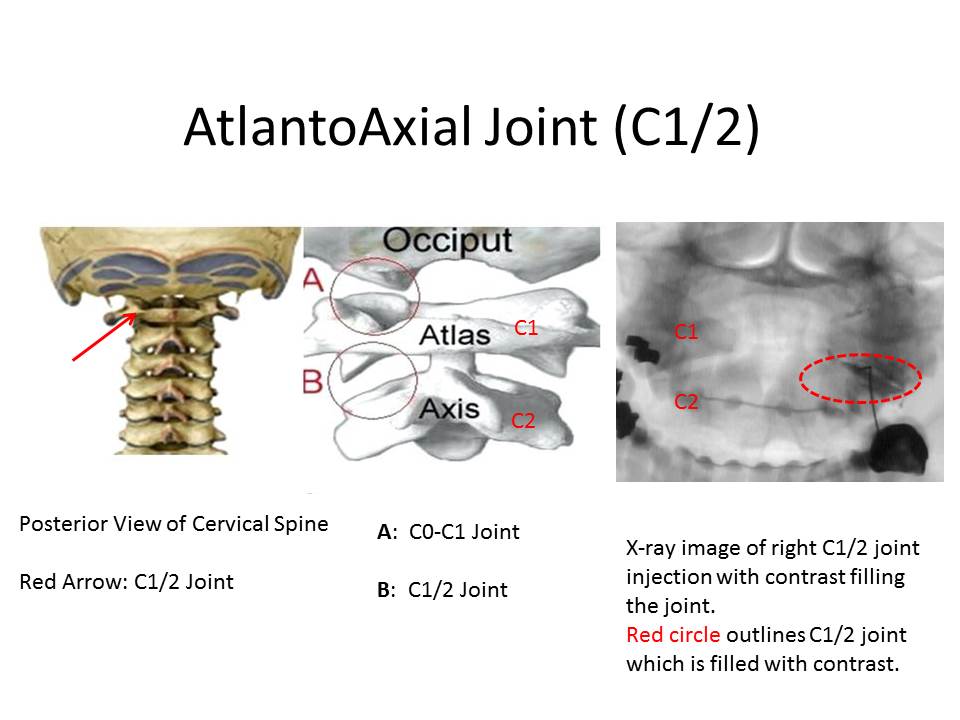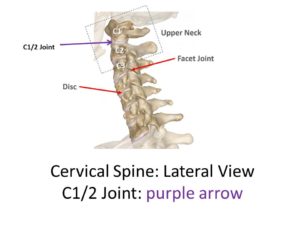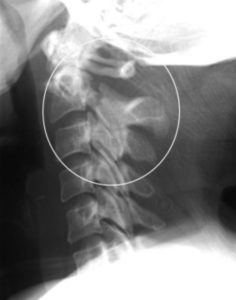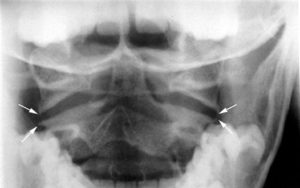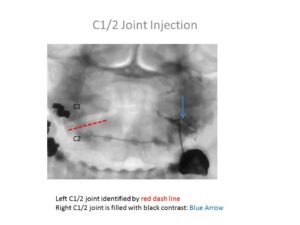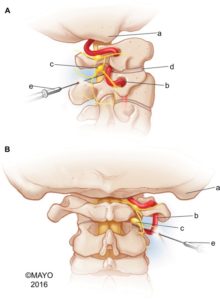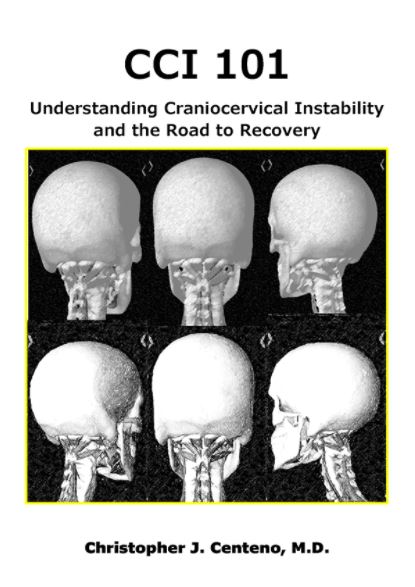At the Centeno-Schultz Clinic, we acknowledge that headache pain can be disabling. It can rob you of your ability to engage in and love life and render you incapable of completing the easiest of tasks. Headaches can arise from a number of stimuli, which include but are not limited to fatigue, hormonal imbalance, sun exposure, eyestrain, and stress, and your neck may be the origin of them.
Headaches can also arise from injuries in the cervical spine, and as such this is referred to as a cervicogenic headache. Injuries to bones, joints, ligaments, tendons, and nerves in the cervical spine (including the neck) can cause headaches.
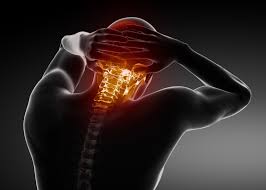
Today I will be discussing the important C1/2 joint as it can be responsible for debilitating headaches but is often missed or overlooked by many physicians.
What Is the C1/2 Joint?
The first cervical vertebra (C1) is called the atlas, and the second cervical vertebra (C2) is called the axis.
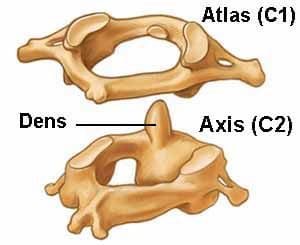
The atlas fits securely upon the axis and in so doing creates a joint. The joint is also referred to as the atlantoaxial joint.(AA joint). There is a right and left C1/2 joint in each patient, separated by the dens.
What Is the Function of the C1/2 Joint?
The C1/2 joint allows the head to nod up and down on the vertebral column.
How Does the C1/2 Joint Become Injured?
Injury can occur due to degeneration or trauma. Injury may occur to the bones, joint, or supporting ligaments, which in turn results in instability of the joint. Motor vehicle accidents are a common cause of C1/2 joint injury with resultant pain
Typical Referral Pattern?
Patients typically present with pain in the suboccipital area with extension into the occiput.
i
Diagnosis of C1/2 Joint Pain
Diagnosing C1/2 joint pain involves the following:
- Understanding the mechanism of injury of an accident and how forces may have impacted the C1/2 joint and neck
- Identifying whether there is a temporal relationship between the trauma and the onset of symptoms
- Determining if there is pain on palpation of the joint with restriction in range of motion
Flexion/Extension X-Rays of the Cervical Spine
Open-Mouth Odontoid X-Ray
In the X-ray above, the white arrow points to the C1/2 joint
X-Ray–Guided Injection into the C1/2 Joint
What Are the Risks of the C1/2 Joint Injection?
Risks include the typical risks associated with injections, such as bleeding, infection, failure, escalation in pain, and nerve damage. The C1/2 joint injection is associated with unique risks compared with other injections due to its proximity of adjacent structures, which include the vertebral artery, cervical spinal cord, and C2 dorsal ganglion.
The images below show the following:
- A (top image): lateral view of C1/2 joint
- B (bottom image): posterior view of joint
- a=mastoid, b=vertebral artery, and c=C2 dorsal ganglion root
Is C1/2 Joint Injection Safe?
A recent study reviewed C1/2 joint injections performed at the Mayo Clinic between 2005 and 2015. A total of 147 cases were reviewed. The most common procedural adverse event was vascular uptake of contrast; whereas, the most common post-procedural event was a transient increase in pain. The authors concluded the C1/2 joint injection is a safe and viable option in patients with C1/2 joint pain.
What is intriguing is that only 147 injections were performed at the prestigious Mayo Clinic over five years, which is 29 injections per year. At the Centeno-Schultz Clinic, we perform, on average, 25 C1/2 joint injections per MONTH. Mastery of this injection occurs after completion of 100 cases. The University of Colorado, Stanford, and Emery Medical School, or respective hospitals, do not teach the C1/2 injection to the residents or fellows. This is regrettable.
If you continue to have ongoing headaches that have not responded to oral medications, behavioral modification, and lower cervical facet injections (C2–4), consider a comprehensive evaluation at the Centeno-Schultz Clinic. We offer board-certified, fellowship-trained physicians who are dedicated to providing you the best clinical outcome. We are the leaders in both Denver and Colorado in performing safe, successful C1/2 joint and neck injections. Treatment options include platelet-rich plasma, bone marrow-derived stem cells, or both under direct visualization, either X-ray or ultrasound or both. Please watch the video below to understand why our PRP is superior to most.
